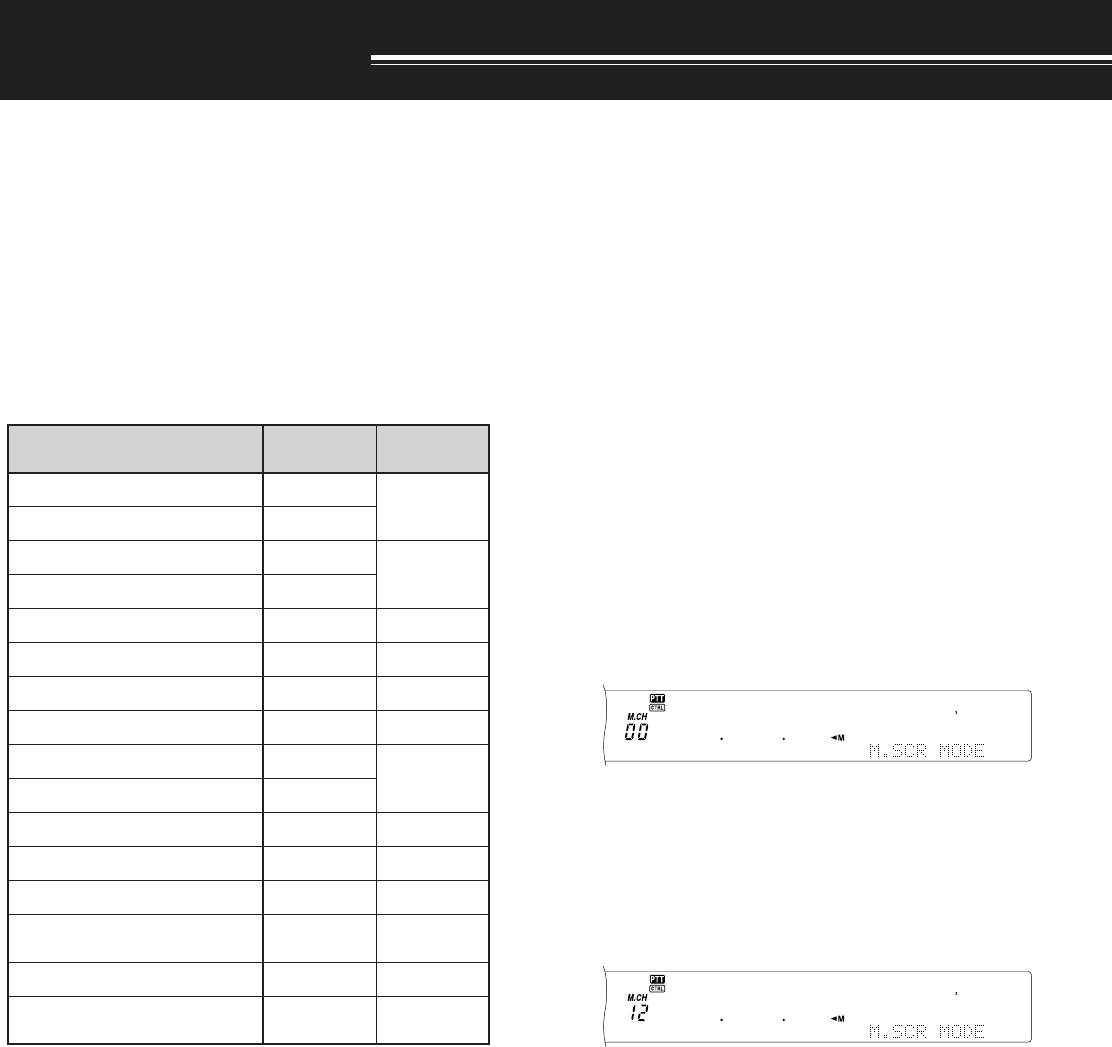
58
MEMORY FEATURES
MEMORY CHANNELS
The TS-2000(X) provides you with 300 memory
channels, numbered 00 to 299, for storing operating
frequency data, modes and other information.
Memory channels 00 to 289 are called Conventional
Memory Channels. Memory channels 290 to 299 are
designed for programming VFO tuning ranges and
scan ranges. The data you can store is listed below:
Conventional memory is used for storing data you
will often recall. For example, you may store the
frequency where you regularly meet your club
members.
retemaraP
lennahC
982~00
lennahC
992~092
ycneuqerfXRseY
seY
1
)xelpmis(
ycneuqerfXTseY
edomXRseY
seY
1
)xelpmis(
edomXTseY
seicneuqerfdnE/tratSoNseY
ycneuqerftesffOseYseY
noitceridtfihSseYseY
edomesreveRseYseY
ezispetsycneuqerfXRseY
seY
)xelpmis(
ezispetsycneuqerfXTseY
ycneuqerfenoTseYseY
ycneuqerfSSCTCseYseY
edocSCDseYseY
edomSCD/SSCTC/enoT
FFO/NO
seYseY
emanyromeMseYseY
tuokcoLlennahCyromeM
FFO/NO
seY
1
seY
1
1
Changing the data after recalling a memory channel overwrites the
contents of the channel.
STORING DATA IN MEMORY
There are 2 methods used for storing transmit/receive
frequencies and associated data in memory channels
00 to 289. Use either method, depending on the
relationship of the receive and transmit frequencies
you store:
• Simplex channels:
RX frequency = TX frequency
• Split-frequency channels:
RX frequency ≠ TX frequency
Memory channels 290 to 299 can also be used as
simplex channels.
Note: When RIT or XIT is ON, the frequency that includes the RIT or
XIT offset will be stored.
■ Simplex Channels
1 Press [A/B] to select VFO A or VFO B.
•“tA” or “tB” appears to show which VFO
is selected.
2 Select the frequency, mode, etc. to be stored.
3 Press [M.IN] to enter Memory Scroll mode.
• To exit Memory Scroll mode and abort the
storage process, press [CLR].
4 Turn the MULTI/ CH control, or press Mic [UP]/
[DWN] to select a memory channel.
• You can also select a channel by entering a
3-digit number, such as 012, using the
numeric keys.
5 Press [M.IN] again to store the data.
• The previous data stored in the channel is
overwritten.


















